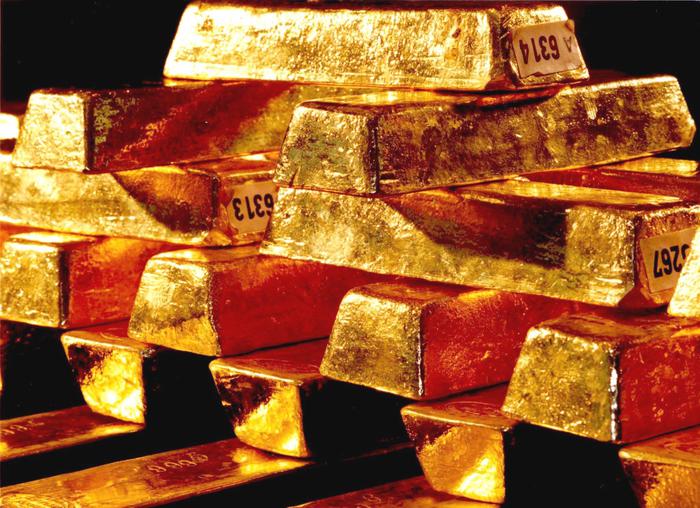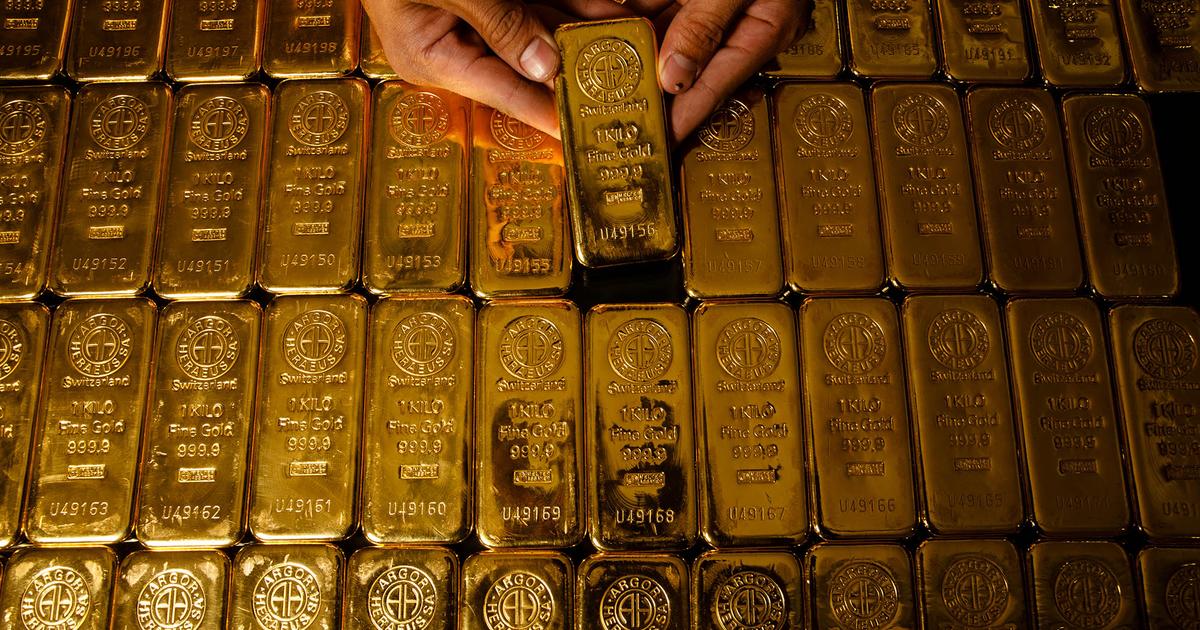Enlarge image
Brilliant investment: Gold bars from the Bundesbank in Frankfurt am Main
Photo: Federal Bank / dpa
War in Ukraine, energy crisis, recession worries - the environment in recent months has been made for a classic "crisis currency" like gold.
Many investors may have bet on an increase in the price of gold a long time ago, but this did not happen at first.
Shortly after Russia's attack on Ukraine, the price of gold rose sharply to more than $2,000 an ounce for a short time.
By the end of October, however, it had fallen to little more than $1,600 an ounce, or about 20 percent.
But in the meantime the development has changed direction.
Since the beginning of November, the price of gold has risen by almost 10 percent.
The precious metal is now trading at $1,770 an ounce again – the highest it has been in three months.
The main reason for the reversal is the changed expectations of the financial market with regard to US interest rate policy.
Recent signs in the US point to a slowdown in inflation there.
In October, for example, the inflation rate in the USA fell to 7.7 percent.
In September it was still 8.2 percent.
It was the fourth monthly decline in a row, and it also triggered strong gains in the stock market.
Reason: In view of lower inflation rates, the US Federal Reserve may be able to slow down its rate hikes.
More liquidity is usually received as good news on the stock exchange, because it can drive prices up.
Euro gains ground against dollar
However, what is crucial from the point of view of gold buyers is that lower interest rates also reduce the attractiveness of fixed-income securities such as bonds, which investors see as competition to gold.
And: If the US Federal Reserve slows down its interest rate policy, the dollar loses its attractiveness – the exchange rate falls.
The US currency is considered a particularly important factor influencing the price of gold, as the precious metal is usually traded in dollars.
So for non-dollar investors, gold gets cheaper when the dollar gets cheaper, which in turn drives demand for gold.
A fall in the dollar therefore often leads to increases in the price of gold.
In recent months, the dollar has been soaring on the back of rising interest rates in the United States.
For example, it has at times reached parity with the euro, so a dollar was worth as much as a euro.
At the beginning of 2021, one euro cost more than $1.20.
Recently, however, the development of the euro-dollar exchange rate has also reversed: the euro has made up significant ground again since the beginning of November.
Dollar weakness triggers gold rally
Experts see a direct connection between the recent dollar weakness and the rising price of gold.
According to
Markus Blaschzok
, chief analyst at precious metals investment house Solit Management, the rally that precious metals and mining stocks have staged in recent weeks was triggered by a "historically strong slump in the US dollar".
The USD index fell nearly 4 percent in the previous week's trading after falling 4 percent on Friday, Blaschzok wrote in a comment.
The gold price then rose by 97 US dollars or 5.25 percent within one trading week.
The silver price also rose sharply by more than 4 percent.
However, the pricing interaction is not the only point at which gold and the US dollar touch.
At the same time, both assets are competing for the favor of central banks that are looking for safe investments for their currency reserves.
Recently, there seems to have been a rethink in some central banks in this regard.
As the industry association World Gold Council (WGF) reported a few weeks ago, central banks in various countries around the world significantly increased their gold purchases in the third quarter.
The central banks bought almost 400 tons of gold from July to September of this year.
That was more than four times as much as in the same period last year, according to the WGF.
Central bank purchases are thus at the highest level this year since 1967, when the dollar was still backed by gold.
According to the WGF, the buyers among the central banks in the third quarter of this year included the institutes in Turkey and Qatar.
According to the industry association, some purchases also had to be estimated, which is not unusual.
Not all central banks publish their activities on the gold market, those in China or Russia usually do not.
Enlarge image
"The non-Western central banks probably want to reduce their dependency on the US dollar": gold expert
Thorsten Polleit
from Degussa Goldhandel
"The non-Western central banks probably want to diversify their currency reserves more, in particular reducing their dependency on the US dollar," explains
Thorsten Polleit
, Chief Economist at Degussa Goldhandel.
On the one hand, there are probably fears of a further loss of purchasing power for the dollar, just like for many other western currencies such as the euro, pound sterling or Canadian dollar.
On the other hand, political risks are being reassessed, according to Polleit.
"The freeze on Russia's currency reserves made it very clear to many countries and investors that the US is using the US dollar for political purposes," he says.
"US dollar investments can therefore be confiscated under certain circumstances."
According to the expert, holding physical gold is not subject to such risks.
It is "quasi the natural currency reserve".
According to Polleit, the trend is likely to continue: central banks and investors will continue to try not to let their dependency on the US dollar get out of hand or to reduce it.
"This applies, for example, to the BRICS countries, but also to many other smaller countries," he says.
"More and more central banks seem to be realizing that the bad money they create is not reliable, that it is not a good store of value - hence the growing interest in holding gold."
However, the dollar is unlikely to lose its position as the world's most important currency in the foreseeable future.
"For the time being, the US dollar is and will remain the world reserve currency," Polleit is certain.














